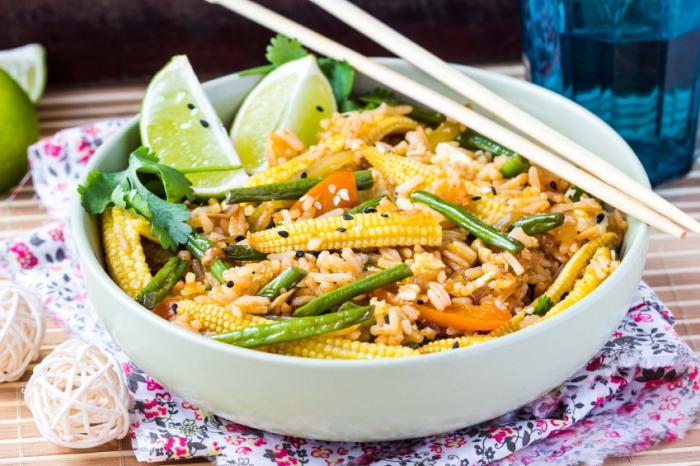Despite the name, green beans are not considered a bean at all in terms of nutrition. Green beans are harvested with their beans in a pod before they have had a chance to mature. They are more nutritionally comparable to other pod vegetables, such as snap peas and okra. Green beans are also commonly known as snap beans and string beans.
This article provides a nutritional breakdown of green beans and an in-depth look at its possible health benefits, how to incorporate more green beans into your diet and any potential health risks of consuming green beans.
Contents of this article:
- Nutritional breakdown of green beans
- Possible health benefits of consuming green beans
- How to incorporate more green beans into your diet
- Potential health risks of consuming green beans
Nutritional breakdown of green beans
According to the USDA National Nutrient Database, one cup of fresh green beans (about 100 grams) contains 31 calories, 0 grams of fat, 7 grams of carbohydrate, 3 grams of fiber, 3 grams of sugar and 2 grams of protein.
Green beans are a rich source of vitamins A, C and K and also contain folate, thiamin, riboflavin, iron, magnesium and potassium.
Possible health benefits of consuming green beans
Consuming fruits and vegetables of all kinds has long been associated with a reduced risk of many adverse health conditions. Many studies have suggested that increasing consumption of plant foods like green beans decreases the risk of obesity, diabetes, heart disease and overall mortality while promoting a healthy complexion, increased energy and overall lower weight.

Green beans are nutritionally comparable to other pod vegetables, such as snap peas and okra.
Cancer
Green beans contain a high amount of chlorophyll, which can block the carcinogenic effects of heterocyclic amines generated when grilling meats at a high temperature. If you tend to like your grilled foods charred, make sure to pair them with green vegetables to decrease your risk.
Fertility
For women of child-bearing age, consuming more iron from plant sources such as spinach, beans, pumpkin and green beans appears to promote fertility, according Harvard Medical School's Harvard Health Publications. Adequate folic acid intake is also needed for pregnant women in order to protect their infants against neural tube defects. One cup of green beans provides approximately 10% of daily folic acid needs and 6% of iron.
Depression
Meeting your daily folate needs may also help with depression. Adequate folate consumption can prevent an excess of homocysteine in the body, which prevents blood and other nutrients from reaching the brain. Excess homocysteine can interfere with the production of the feel-good hormones serotonin, dopamine, and norepinephrine, which regulate mood, sleep and even appetite.
Bone health
Low intakes of vitamin K have been associated with a higher risk for bone fracture. Adequate vitamin K consumption improves bone health by acting as a modifier of bone matrix proteins, improving calcium absorption and reducing urinary excretion of calcium.
One cup of green beans provides 14.4 micrograms of vitamin K (almost 20% of daily need) as well as 4% of calcium.
It is important to remember that it is not the individual vitamins, minerals or antioxidants alone that make vegetables like green beans such an important part of our diet. It has been proven time and again that isolating these healthful nutrients in supplement form will not provide the same outcomes.
How to incorporate more green beans into your diet
Green beans are available fresh, frozen or canned. Make sure to rinse and drain canned beans to reduce the sodium content up to 41%. When buying fresh, choose beans that are crisp and bright green in color. Refrigerate in a bag to maintain freshness.

Add green beans to rice, vegetables, mini corn and peppers for a delicious stir-fry.
Quick tips:
- Green beans can be eaten fresh. Just snap or cut off each end and add to a salad or dip in your favorite hummus
- Drizzle fresh green beans with olive oil, garlic and fresh cracked pepper and roast for 25 minutes, turning halfway through
- Top fresh green beans with your favorite marinara sauce and sprinkle with fresh Parmesan or Romano cheese.
Try some of these healthy and delicious recipes developed by registered dietitians:
- Spicy Chinese stir-fry
- Healthy green bean casserole
- Quick and easy Mexican minestrone
- Sticky sesame green beans
Potential health risks of consuming green beans
If you are taking blood-thinners such as Coumadin (warfarin) it is important that you do not suddenly begin to eat more or less foods containing vitamin K, which plays a large role in blood clotting.
It is the total diet or overall eating pattern that is most important in disease prevention and achieving good health. It is better to eat a diet with a variety than to concentrate on individual foods as the key to good health.
References:
- Reducing sodium in canned beans - easier than 1-2-3, Chef Kyle Shadix, MS, RD, Today’s Dietitian, Vol. 12 No. 1 P. 62, accessed 17 November 2014.
- Green beans aren’t quite beans, Filipic, Martha, The Ohio State University, accessed 17 November 2014.
- Depression and diet, Nutrition 411, review date November 2008, accessed 20 February 2014.
- Anticancer compounds found in food, Machowsky, Jason, MS, RD, CDN, CSCS, Nutrition 411, last reviewed February 2012, accessed 8 September 2014.
- Bone health: looking beyond calcium, Nutrition 411, last reviewed March 2009, accessed 8 September 2014.
No comments:
Post a Comment